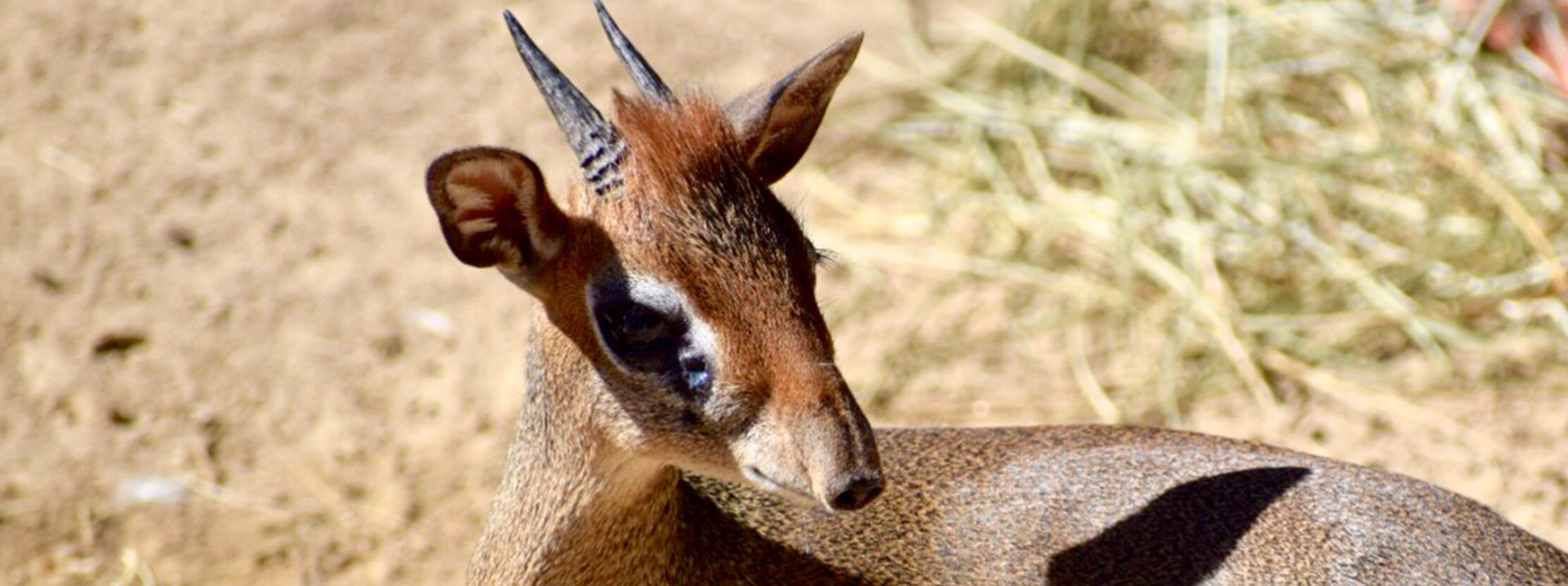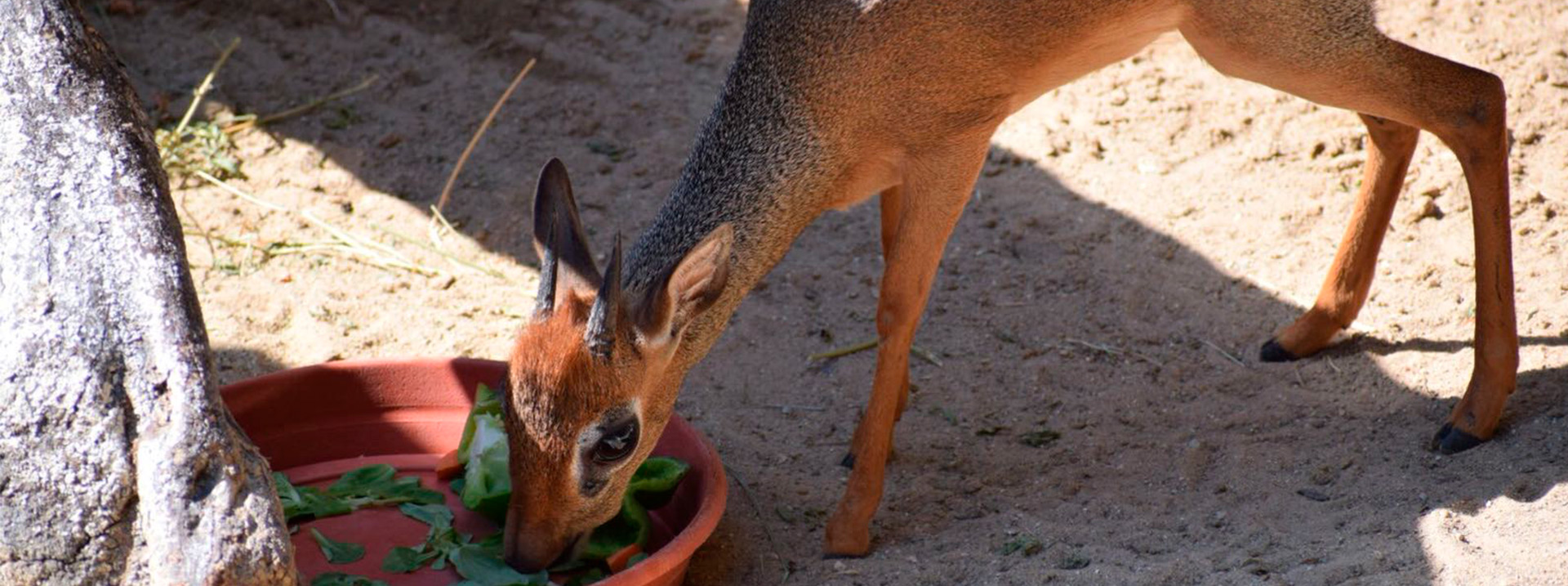


Kirk’s Dik-Dik
Madoqua kirkii
A dik-dik is the name for any of four species of small antelope in the genus Madoqua that live in the bushlands of eastern and southern Africa.
Dik-diks stand about 30–40 centimetres (12–15.5 in) at the shoulder, are 50–70 cm (19.5–27.5 in) long, weigh 3–6 kilograms (6.6–13.2 lb) and can live for up to 10 years. Dik-diks are named for the alarm calls of the females. In addition to the females’ alarm call, both the male and female make a shrill, whistling sound. These calls may alert other animals to predators.
Species
Madoqua
Order
Artiodactyla
Family
Bovidae
Danger of Extinction
Bajo riesgo (Preocupación menor)

Features
The dik-dik is considered to be the second smallest antelope of Africa. It spans between 55 and 72 cm in length from head to tail, 30 to 40 cm in height, and its weight varies between 3 and 7 kg.
The coloration of its body varies from yellowish-grey to brown, with its belly area being lighter. A very surprising characteristic is its prehensile snout which can move in any direction. In addition, these animals have a gland near each eye that they use to mark their territory, as well as a tuft of hair on their forehead that they ruffle when agitated.
Dik-diks are sexually dimorphic; the male and the female can be differentiated at a glance since the male is the only one that has horns (4-11 cm). They reach sexual maturity quite early, before turning one year old. Gestation lasts between 5 and 6 months; therefore, they can reproduce up to 2 times a year. They bear a single offspring per birth.
Customs, food and habitat:
The dik-dik lives in areas of shrub in the savanna; more specifically in Eastern Africa (Somalia, Kenya, and Tanzania) and Southern Africa (Namibia and Angola). These are territorial animals and they live in monogamous couples with their offspring, although the offspring must abandon the group quite early.
Dik-diks are shy and elusive animals that hide in the bushes. When they believe they are in danger, they run quickly while jumping and moving about in a zigzag pattern. In addition, they produce a “dik-dik” sound, which they use as an alarm call.
Dik-diks are herbivores and they feed on plant matter that is easily digestible and has small amounts of fiber. 80% of their diet consists of leaves from trees and bushes, 17% comes from pastures, and the rest of their diet is made up of weeds and rush. They feed mainly in the early hours of the morning and at dusk.
Curiosities
Their offspring are born head first with their front legs folded backward – a very curious fact as most ruminants are born with their front legs extended.
These are territorial animals that are capable of dwelling in the same area for years. They mark their territory with urine and feces through a ritual that also helps them to maintain their bond with their partner. During this process, known as a “defecation ceremony,” the female defecates and urinates first, followed by the male. They conclude the ceremony by marking nearby plants with secretions from their preorbital gland.
Their offspring are born head first with their front legs folded backward – a very curious fact as most ruminants are born with their front legs extended.
These are territorial animals that are capable of dwelling in the same area for years. They mark their territory with urine and feces through a ritual that also helps them to maintain their bond with their partner. During this process, known as a “defecation ceremony,” the female defecates and urinates first, followed by the male. They conclude the ceremony by marking nearby plants with secretions from their preorbital gland.

